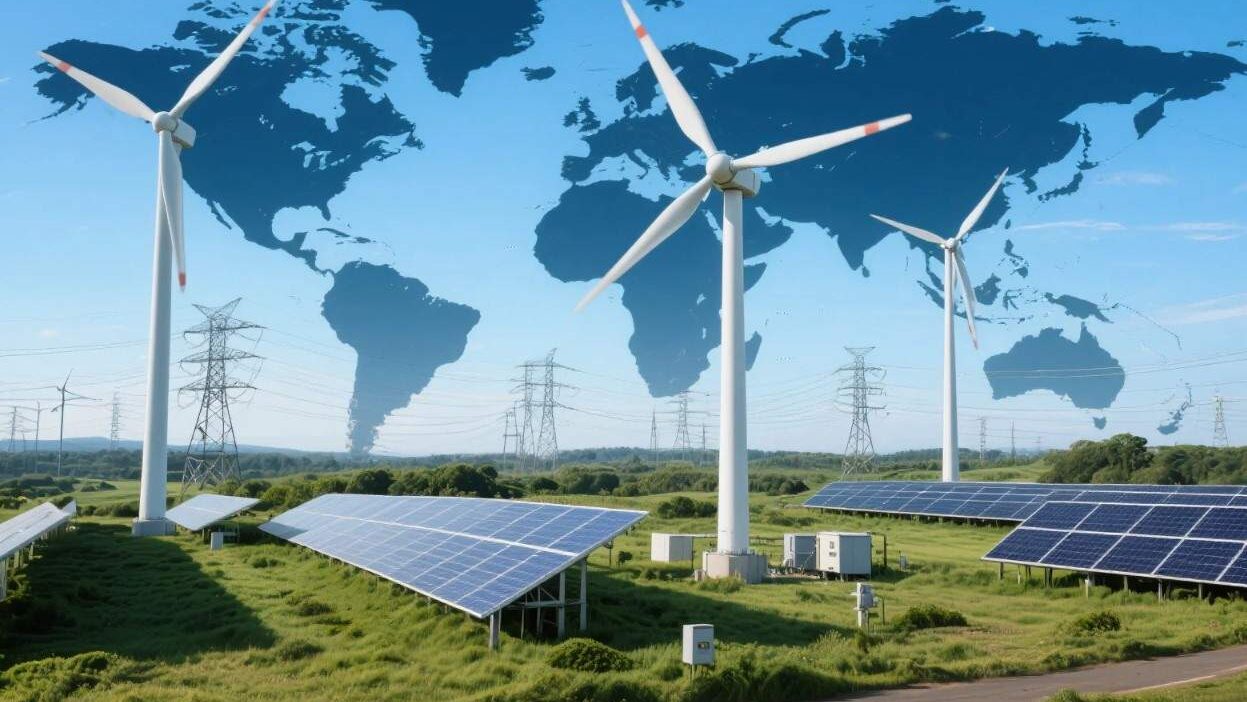Powering a Democratic, Sustainable Energy Future
The Energy Revolution Starts Here
The global energy landscape is undergoing a seismic shift. As the world races to decarbonize, renewable energy—solar, wind, hydro, and geothermal—is no longer a niche alternative but a mainstream necessity. Yet, traditional energy systems remain stubbornly centralized: utilities, grids, and middlemen control production, distribution, and pricing, often leaving consumers and small-scale producers at a disadvantage.
Enter decentralized renewable energy trading platforms—a revolutionary class of tools that leverage blockchain, AI, and peer-to-peer (P2P) technology to empower individuals, communities, and businesses to trade renewable energy directly. By cutting out intermediaries, these platforms democratize access to clean energy, reduce costs, and accelerate the transition to a sustainable future. This report explores how they work, their transformative potential, and the challenges they face as they reshape the energy industry.
What Are Decentralized Renewable Energy Trading Platforms?
Decentralized renewable energy trading platforms are digital ecosystems that enable peer-to-peer (P2P) transactions of renewable energy between producers (e.g., homeowners with solar panels, community wind farms) and consumers (e.g., households, businesses). Unlike traditional grids, where energy flows from a central utility to end-users, these platforms use decentralized technologies to:
- Connect Producers and Consumers Directly: Eliminate middlemen (utilities, brokers) to reduce fees and delays.
- Automate Transactions: Use smart contracts to execute trades based on predefined rules (e.g., “Sell excess solar power to Neighbor X at $0.25/kWh”).
- Track Energy Flow: Leverage blockchain for transparent, immutable records of energy production, consumption, and ownership.
Think of them as “energy marketplaces” where anyone with a renewable energy source can sell their surplus, and anyone needing power can buy it—no utility required.
The Problem with Centralized Energy Systems
Traditional energy systems are built on a “hub-and-spoke” model:
- Utilities Control the Grid: Large corporations own and operate transmission lines, setting prices and dictating who can buy or sell energy.
- High Costs for Consumers: Retail electricity prices often include hidden fees for grid maintenance, transmission, and profit margins.
- Wasted Energy: Centralized systems struggle to balance supply and demand, leading to curtailment (wasted renewable energy) during peak production (e.g., sunny days with low demand).
- Limited Access: Remote communities or small-scale producers (e.g., farmers with solar panels) lack affordable ways to sell their energy.
Decentralized platforms address these flaws by putting control back in the hands of users.
How Do Decentralized Platforms Work?
At their core, these platforms combine three cutting-edge technologies:
1. Blockchain: The Trustless Backbone
Blockchain provides a secure, transparent ledger to record every energy transaction. Each “block” contains data about energy produced, consumed, and traded, with cryptographic hashes linking blocks to prevent tampering. This ensures:
- Transparency: Anyone can verify the origin and flow of energy.
- Security: Hackers can’t alter transaction records without consensus from the network.
- Immutability: Once a trade is recorded, it can’t be reversed or falsified.
2. Smart Contracts: Automated, Rule-Based Trading
Smart contracts are self-executing code that automates trades based on predefined conditions. For example:
- A homeowner with solar panels could set a smart contract to sell 5 kWh of excess energy to their neighbor at 3 PM daily, triggering automatically when their panels generate surplus power.
- A business could bid on renewable energy from a wind farm, with the contract executing only if the wind farm meets its output targets.
3. IoT and Energy Monitoring
Internet of Things (IoT) devices—smart meters, sensors, and inverters—track real-time energy production and consumption. This data feeds into the platform, enabling:
- Accurate Pricing: Prices adjust dynamically based on supply and demand (e.g., higher prices during peak evening hours).
- Grid Balancing: Platforms can redirect excess energy to areas with high demand, reducing waste.
The Benefits: Why Decentralization Matters
1. Lower Costs for Consumers
By cutting out utilities and brokers, P2P trading reduces fees. For example:
- A homeowner in Germany using Power Ledger (a leading platform) saved 30% on electricity bills by selling excess solar power to neighbors.
- Small businesses in Australia using WePower access cheaper renewable energy than grid rates.
2. Higher Revenue for Producers
Renewable energy producers (homeowners, farmers, community projects) earn more by selling directly to consumers. For instance:
- A solar farm in Kenya using LO3 Energy increased revenue by 25% by bypassing traditional grid operators.
- A homeowner in California with rooftop solar now earns 0.15/kWh via their utility.
3. Reduced Carbon Footprint
Decentralized platforms prioritize renewable energy, accelerating the transition away from fossil fuels. By enabling direct sales of solar, wind, and hydropower, they reduce reliance on coal and gas-fired plants.
4. Energy Independence
Communities and individuals gain control over their energy supply. Remote villages, for example, can use decentralized platforms to sell hydropower generated from local rivers, reducing dependence on expensive, polluting diesel generators.
5. Grid Resilience
P2P trading enhances grid stability by distributing energy production. During outages, communities can share stored renewable energy (e.g., from home batteries) through the platform, keeping lights on without waiting for utility repairs.
Challenges: Scaling the Decentralized Revolution
While promising, decentralized renewable energy platforms face hurdles:
1. Regulatory Uncertainty
Governments and utilities often resist decentralized systems, fearing loss of control over the grid. Regulations vary widely—some countries (e.g., Germany, Australia) support P2P trading, while others (e.g., the U.S., India) lack clear frameworks, slowing adoption.
2. Technical Complexity
Building and maintaining blockchain networks, IoT infrastructure, and smart contracts requires specialized expertise. Small-scale producers may lack the resources to adopt these technologies.
3. Interoperability Issues
Platforms often use proprietary blockchains or standards, making it hard to trade energy across networks. For example, energy sold on Power Ledger can’t easily be traded on WePower without conversion.
4. Consumer Adoption
Educating users about P2P trading and its benefits is critical. Many homeowners and businesses remain skeptical of “crypto-based” energy trading, fearing security risks or complexity.
Real-World Examples: Pioneering the Decentralized Energy Future
- Power Ledger (Australia): One of the first platforms to enable P2P solar trading. Homeowners in Perth use it to sell excess solar power to neighbors, with transactions recorded on the Ethereum blockchain. The platform has processed over 100,000 MWh of energy since 2017.
- WePower (Europe): Focuses on renewable energy certificates (RECs) and P2P trading. Businesses in Poland and Germany buy renewable energy directly from wind and solar farms, reducing their carbon footprints by 30–50%.
- LO3 Energy (USA): Developed the Brooklyn Microgrid, a community-driven platform where residents trade solar power. During Hurricane Sandy, the microgrid provided backup power to 50 homes, demonstrating resilience.
- Sun Exchange (South Africa): Connects solar project developers with investors worldwide. Users can buy “solar cells” (small stakes in solar farms) and earn returns from the energy they generate, democratizing access to large-scale renewables.
The Future: Decentralization as the New Normal
The future of decentralized renewable energy trading is bright, with innovations on the horizon:
- AI-Driven Energy Forecasting: Machine learning will predict energy demand and supply, optimizing prices and reducing waste.
- Cross-Platform Interoperability: Standards like the Interoperable Energy Ledger (IEL) will enable seamless trading across platforms, creating a global renewable energy market.
- Integration with EVs and Batteries: Electric vehicles (EVs) and home batteries will act as “mobile energy storage units,” allowing users to sell stored power during peak demand.
- Government Partnerships: Countries like the U.K. and Canada are already testing regulatory sandboxes to support decentralized platforms, paving the way for mass adoption.
Empowering a Sustainable Energy Future
Decentralized renewable energy trading platforms are more than a technological novelty—they’re a movement to democratize energy access, reduce costs, and accelerate the transition to a carbon-neutral world. By putting control back in the hands of users, these platforms are rewriting the rules of energy production and consumption.
As adoption grows and regulations adapt, the day when every homeowner, farmer, and business can trade renewable energy directly—with no middlemen, no hidden fees, and no carbon footprint—draws closer. The future of energy is decentralized, and it starts with you.



